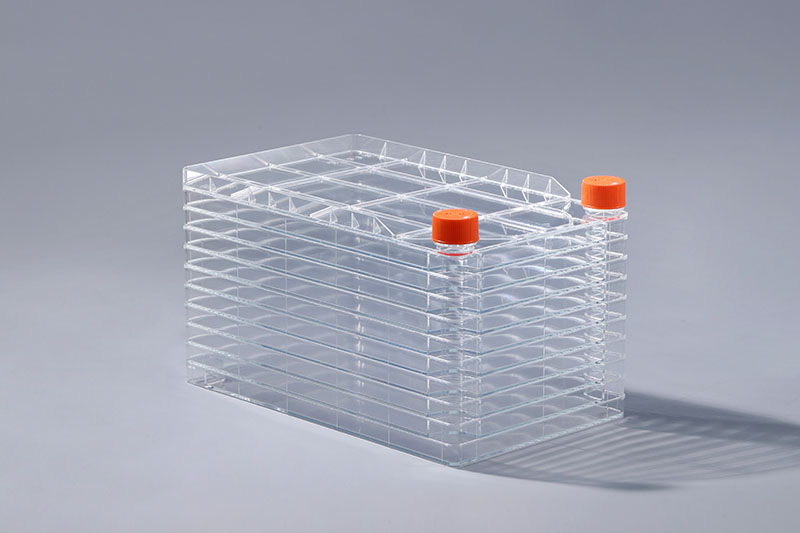Com o desenvolvimento aprofundado do campo das ciências da vida, a tecnologia de cultura de células é amplamente utilizada em muitos campos, como biofármacos, produção industrial de vacinas e anticorpos monoclonais. De acordo com as diferentes formas de crescimento celular, ele é dividido em duas categorias: células aderentes e células em suspensão. Então, quais células podem ser cultivadas usando cell factory?
A fábrica de células é uma estrutura de várias camadas de consumíveis de cultura de células. As especificações comuns incluem 1 camada, 2 camadas, 5 camadas, 10 camadas, 40 camadas, etc. É usado principalmente para a cultura de células aderentes. O crescimento das células aderentes deve ter uma superfície de suporte que possa ser fixada, e as células podem crescer e se reproduzir nesta superfície contando com os fatores de fixação secretados por elas mesmas ou fornecidos no meio de cultura. Depois que as células se ligam, elas geralmente cobrem a superfície da cultura em poucos dias e formam uma monocamada densa de células, como células Vero, células HEK 293, células CAR-T, MRC5, células CEF, macrófagos alveolares suínos, células de mieloma, DF - 1 células, células ST, células PK15, células Marc145, etc. foram todas aderidas à fábrica de células para cultura.
Além disso, este consumível também pode ser usado para cultura estacionária de células em suspensão. As células em suspensão referem-se a células que crescem independentemente da superfície do suporte e crescem em suspensão no meio de cultura, como os linfócitos. As fábricas de células são geralmente produzidas a partir de matérias-primas de poliestireno e a superfície é hidrofóbica. Se for usado para cultura de células aderentes, a superfície precisa ser tratada com TC para aumentar sua hidrofilicidade, o que é adequado para o crescimento de células aderentes.
Cell factories are generally produced from polystyrene raw materials, and the surface is hydrophobic. If it is used for adherent cell culture, the surface needs to be treated with TC to increase its hydrophilicity, which is suitable for cell adherent growth.
The FAI climbed 5.9 percent year-on-year in the first 11 months of 2018, quickening from the 5.7-percent growth in Jan-Oct, the National Bureau of Statistics (NBS) said Friday in an online statement.
The key indicator of investment, dubbed a major growth driver, hit the bottom in August and has since started to rebound steadily.
In the face of emerging economic challenges home and abroad, China has stepped up efforts to stabilize investment, in particular rolling out measures to motivate private investors and channel funds into infrastructure.
Friday's data showed private investment, accounting for more than 60 percent of the total FAI, expanded by a brisk 8.7 percent.
NBS spokesperson Mao Shengyong said funds into weak economic links registered rapid increases as investment in environmental protection and agriculture jumped 42 percent and 12.5 percent respectively, much faster than the average.
In breakdown, investment in high-tech and equipment manufacturing remained vigorous with 16.1-percent and 11.6-percent increases respectively in the first 11 months. Infrastructure investment gained 3.7 percent, staying flat. Investment in property development rose 9.7 percent, also unchanged.
 English
English



















































